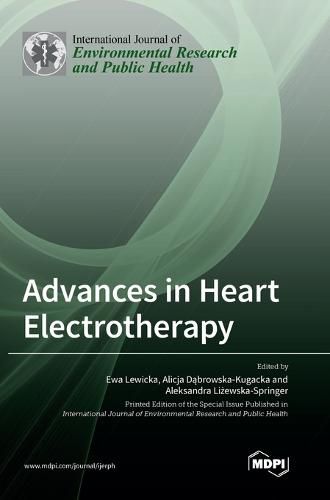Readings Newsletter
Become a Readings Member to make your shopping experience even easier.
Sign in or sign up for free!
You’re not far away from qualifying for FREE standard shipping within Australia
You’ve qualified for FREE standard shipping within Australia
The cart is loading…






This title is printed to order. This book may have been self-published. If so, we cannot guarantee the quality of the content. In the main most books will have gone through the editing process however some may not. We therefore suggest that you be aware of this before ordering this book. If in doubt check either the author or publisher’s details as we are unable to accept any returns unless they are faulty. Please contact us if you have any questions.
The introduction of permanent cardiac pacing in the late 1950s began the era of cardiac electrotherapy. In the 1980s, implantable cardioverter defibrillators (ICDs) were introduced. These advances created new challenges for cardiac implantable electronic devices (CIEDs). Right ventricular pacing was the primary breakthrough; however, over the years, it has become apparent that it can induce cardiac contraction dyssynchrony. Biventricular pacing allowed for the alleviation of dyssynchrony and improved the survival of patients with heart failure and bundle branch block. In recent decades, His bundle pacing has become a new strategy for physiological ventricular activation. However, the use of CIEDs carries several risks, e.g., complications related to transvenous leads. This led to the development of percutaneous lead extraction techniques as well as the introduction of a subcutaneous ICD (S-ICD) and leadless pacing. Technological evolution promises an exciting future in the development of cardiac electrotherapy.
In this Special Issue, readers can find out about the clinical and hemodynamic aspects of right ventricular, His bundle, and biventricular pacing; ICD therapy; treatment of complications and technological advances in cardiac electrotherapy.
$9.00 standard shipping within Australia
FREE standard shipping within Australia for orders over $100.00
Express & International shipping calculated at checkout
This title is printed to order. This book may have been self-published. If so, we cannot guarantee the quality of the content. In the main most books will have gone through the editing process however some may not. We therefore suggest that you be aware of this before ordering this book. If in doubt check either the author or publisher’s details as we are unable to accept any returns unless they are faulty. Please contact us if you have any questions.
The introduction of permanent cardiac pacing in the late 1950s began the era of cardiac electrotherapy. In the 1980s, implantable cardioverter defibrillators (ICDs) were introduced. These advances created new challenges for cardiac implantable electronic devices (CIEDs). Right ventricular pacing was the primary breakthrough; however, over the years, it has become apparent that it can induce cardiac contraction dyssynchrony. Biventricular pacing allowed for the alleviation of dyssynchrony and improved the survival of patients with heart failure and bundle branch block. In recent decades, His bundle pacing has become a new strategy for physiological ventricular activation. However, the use of CIEDs carries several risks, e.g., complications related to transvenous leads. This led to the development of percutaneous lead extraction techniques as well as the introduction of a subcutaneous ICD (S-ICD) and leadless pacing. Technological evolution promises an exciting future in the development of cardiac electrotherapy.
In this Special Issue, readers can find out about the clinical and hemodynamic aspects of right ventricular, His bundle, and biventricular pacing; ICD therapy; treatment of complications and technological advances in cardiac electrotherapy.